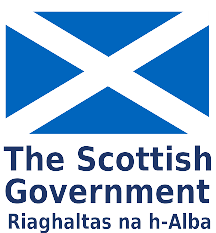Annex
Types of information to be provided by Parties in accordance with Article 9, paragraph 5, of the Paris Agreement
Developed country Parties shall biennially communicate indicative quantitative and qualitative information related to Article 9, paragraphs 1 and 3, of the Paris Agreement, as applicable, including, as available, projected levels of public financial resources to be provided to developing country Parties. Other Parties providing resources are encouraged to communicate biennially such information on a voluntary basis. This should include:
(a) Enhanced information to increase clarity on the projected levels of public financial resources to be provided to developing countries, as available.
(b) Indicative quantitative and qualitative information on programmes, including projected levels, channels and instruments, as available.
(c) Information on policies and priorities, including regions and geography, recipient countries, beneficiaries, targeted groups, sectors and gender responsiveness.
(d) Information on purposes and types of support: mitigation, adaptation, crosscutting activities, technology transfer and capacity-building.
(e) Information on the factors that providers of climate finance look for in evaluating proposals, in order to help to inform developing countries.
(f) An indication of new and additional resources to be provided, and how it determines such resources as new and additional.
(g) Information on national circumstances and limitations relevant to the provision of ex ante information.
(h) Information on relevant methodologies and assumptions used to project levels of climate finance.
(i) Information on challenges and barriers encountered in the past, lessons learned and measures taken to overcome them.
(j) Information on how Parties are aiming to ensure a balance between adaptation and mitigation, taking into account the country-driven strategies and the needs and priorities of developing country Parties, especially those that are particularly vulnerable to the adverse effects of climate change and have significant capacity constraints, such as the least developed countries and small island developing States, considering the need for public and grant-based resources for adaptation.
(k) Information on action and plans to mobilize additional climate finance as part of the global effort to mobilize climate finance from a wide variety of sources, including on the relationship between the public interventions to be used and the private finance mobilized.
(l) Information on how financial support effectively addresses the needs and priorities of developing country Parties and supports country-driven strategies.
(m) Information on how support provided and mobilized is targeted at helping developing countries in their efforts to meet the long-term goals of the Paris Agreement, including by assisting them in efforts to make finance flows consistent with a pathway towards low greenhouse gas emissions and climate-resilient development.
(n) Information on efforts to integrate climate change considerations, including resilience, into their development support.
(o) Information on how support to be provided to developing country Parties enhances their capacities.




